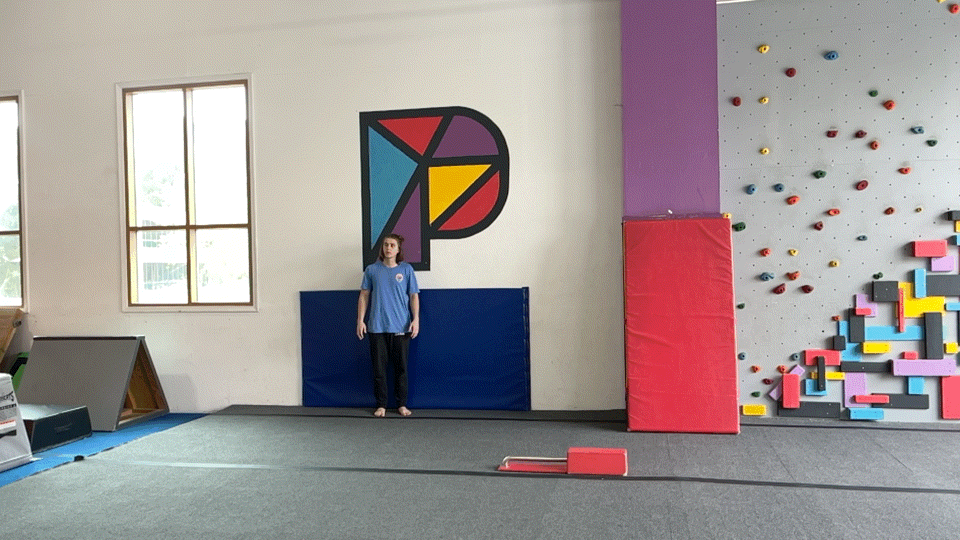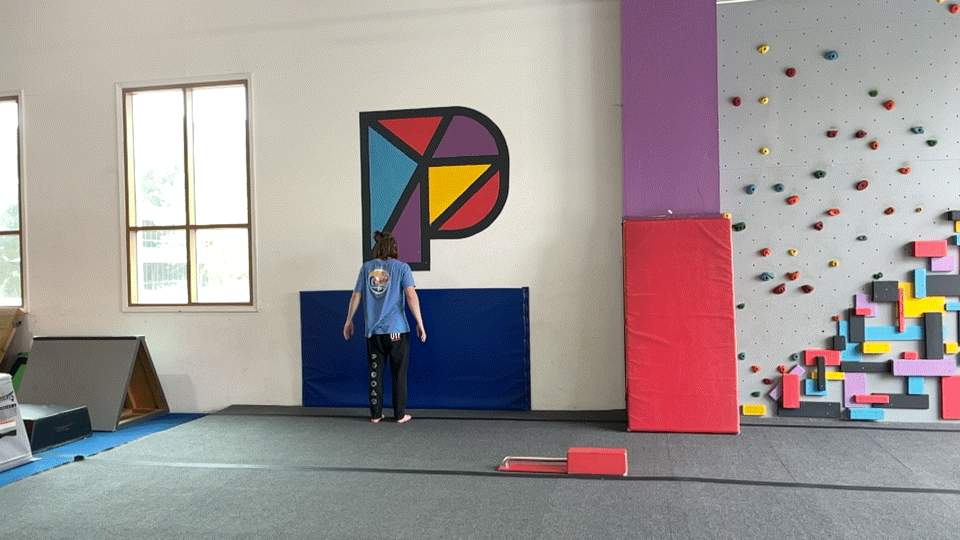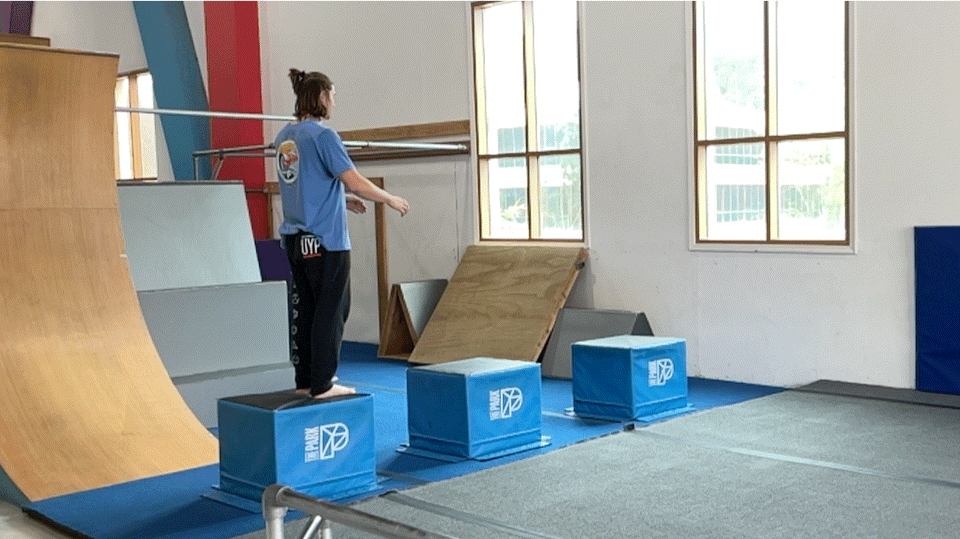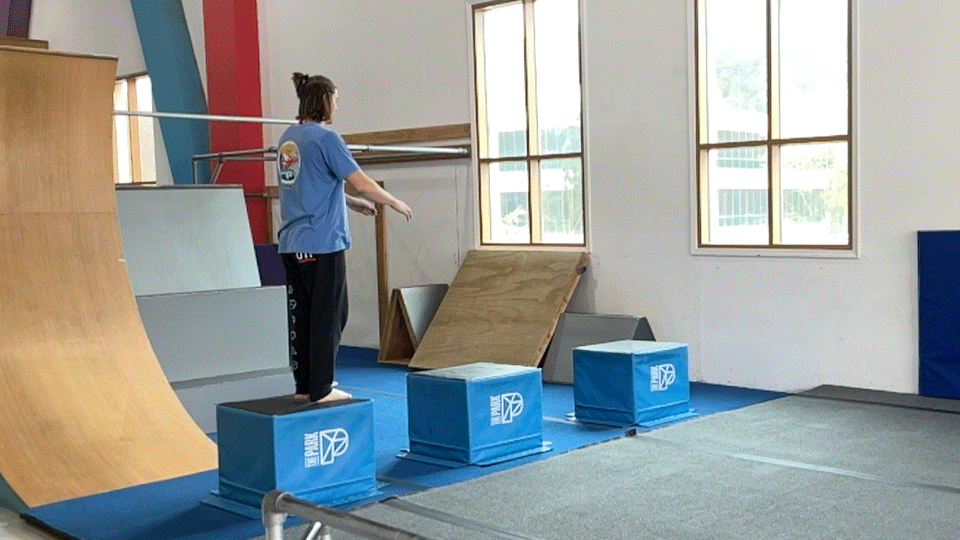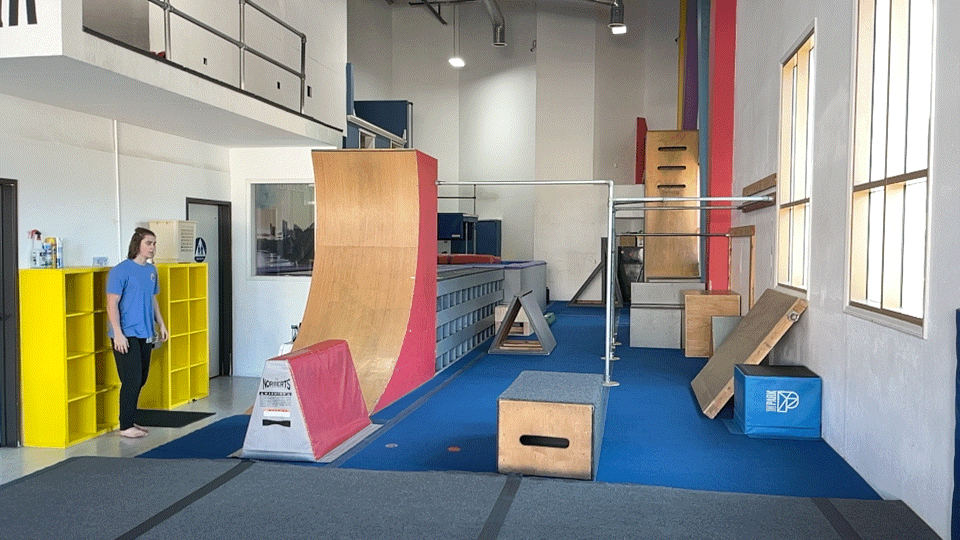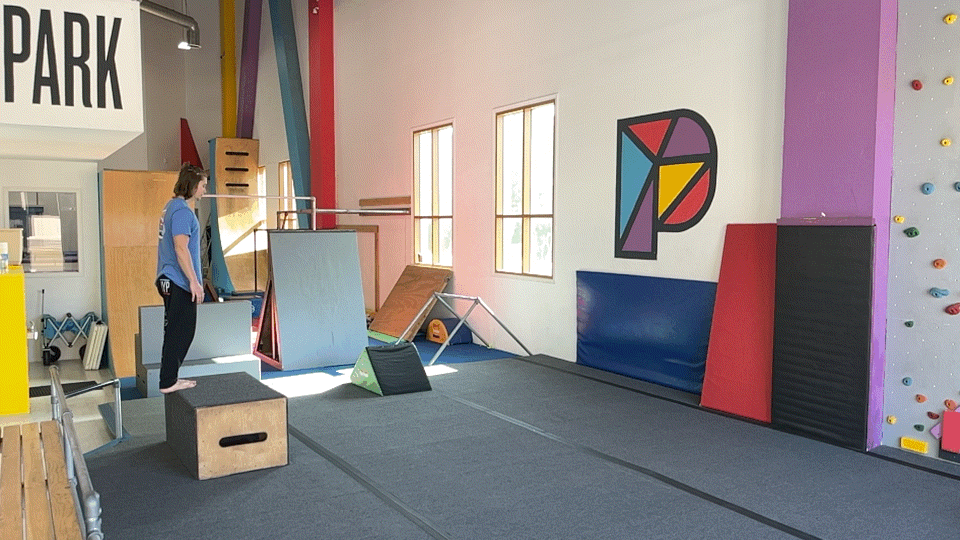lvl 2 parkour: testing challenges
(SCROLL DOWN FOR TUTORIALS)
-
FORWARD SHOULDER ROLL
Level: 2
Zone: Ukemi
-
Backward shoulder roll
Level: 2
Zone: Ukemi
-
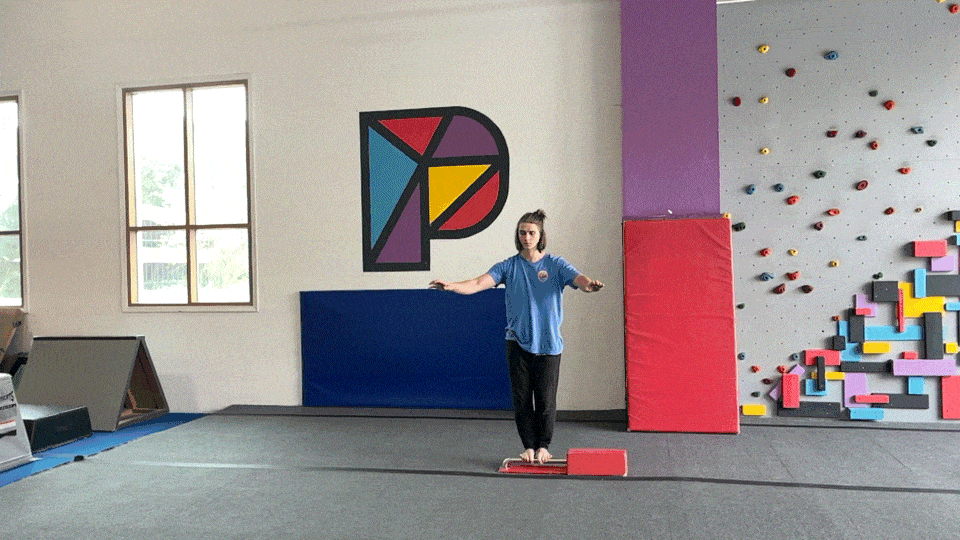
10 second rail balance
Level: 2
Zone: Ukemi
-
Plyo Pre
Level: 2
Zone: Jumps
-
Stride pre
Level: 2
Zone: Jumps
-
180 pre
Level: 2
Zone: Jumps
-
Speed Step - Step Lazy
Level: 2
Zone: Vaults
-
Slant wall beginner climb up
Level: 2
Zone: Walls
-
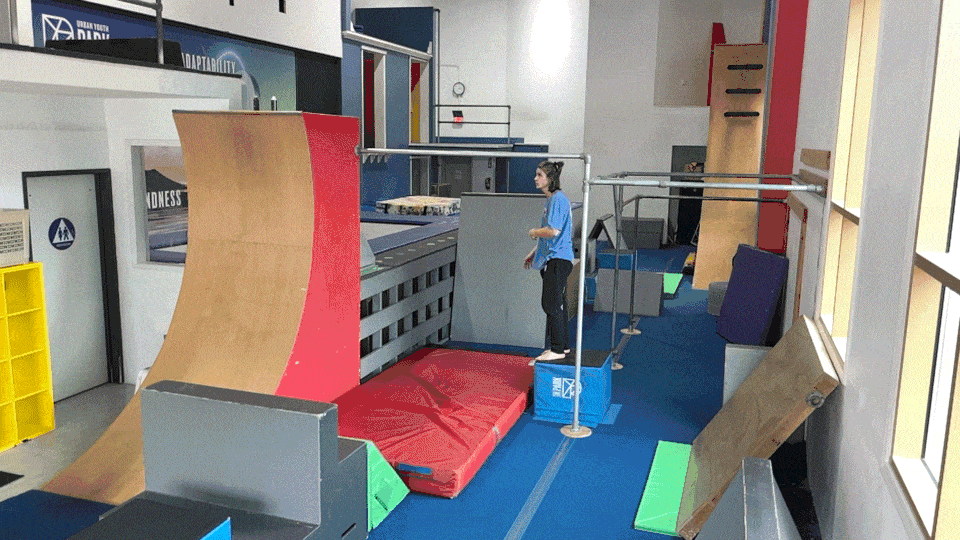
3 Regrips - Lache Bounce Back
Level: 2
Zone: Bars
-
Slant Palm Spin
Level: 2
Zone: Freerunning
-
Step Lazy Down - Cartwheel
Level: 2
Zone: Freerunning
level 2 testing tutorials
lvl 2 ukemi
Testing Challenges:
FORWARD SHOULDER ROLL
BACKWARD SHOULDER ROLL
10 SECOND RAIL BALANCE
UKEMI is a Japanese term that refers to the “art of falling”. No parkour athlete succeeds at 100% of the challenges they try, so athletes must prepare for the inevitable. When an athlete knows how to save themselves from injury, they will have the confidence to push boundaries and progress their parkour skills. For example, an athlete might preform a breakfall when falling backwards, regrip when slipping off a bar, or bounce back when undershooting a jump.
LVL 2 jumps
Testing Challenge:
PLYO PRE
STRIDE PRE
180 PRE
JUMPS are naturally a part of almost every parkour skill. Athletes jump into vaults, jump off walls, & jump up to bars. Jumping techniques teach athletes how to maximize height on takeoff and properly absorb the impact on landing, which is key for both progression and safety. A solid foundation of jumps, make for a solid parkour athlete. For example, a parkour athlete might perform a plyo to dive roll, a 180 jump into a speed step, or a stride into a precision.
LVL 2 Vaults
Testing Challenge:
SPEED STEP - STEP LAZY
VAULTS are vital for moving efficiently through an environment. Generally, vault skills involve using a hand or two, propelling the body up, over, or down obstacles. There are endless variations of vaults, and they can be mixed with other skills to create exciting challenges. For example, a parkour athlete might perform a lazy vault to a plyo, a kong vault to a lache, or a speed step to a forward shoulder roll.
LVL 2 Walls
Testing Challenge:
SLANT WALL BEGINNER CLIMB UP
WALLS—whether slanted or flat—add a dynamic dimension to parkour. Athletes learn to hang on, climb up, push against, & kick off of walls. While a wall may seem to be a barrier for most, a wall provides opportunity for parkour athletes. They allow athletes to reach new heights and add new perspectives for parkour challenges. For example, a parkour athlete might preform a tac to a speed step, a brodie to a regrab, or a cat 180 to a plyo.
LVL 2 bars
Testing Challenge:
3 REGRIPS - LACHE BOUNCE BACK
BARS add swinging to the mix, setting bar skills apart from the other main areas of parkour. The swing factor makes the volume of bar skills so large and their applications so unique. Due to the nature of parkour, bars can also act like the other main areas of parkour. For example, a parkour athlete might preform a kong over a bar (bar & vault skill), a plyo across bars (bar & jump skill), or a jump to pole cat (wall & bar skill).
LVL 2 Freerunning
Testing Challenges:
SLANT PALM SPIN
STEP LAZY DOWN - CARTWHEEL
FREERUNNING = Parkour + Acrobatics. This style of training is so diverse that we have a whole other program dedicated to it. Our Flips & Tricks Program progresses freerunning at a faster pace while students in our Parkour Program will just learn the essentials. Freerunning is all about transitioning between skills smoothly which is known in the movement community as flow. For example, a freerunning athlete might mix lache with cartwheel, kong with roundoff, or plyo with front flip.

